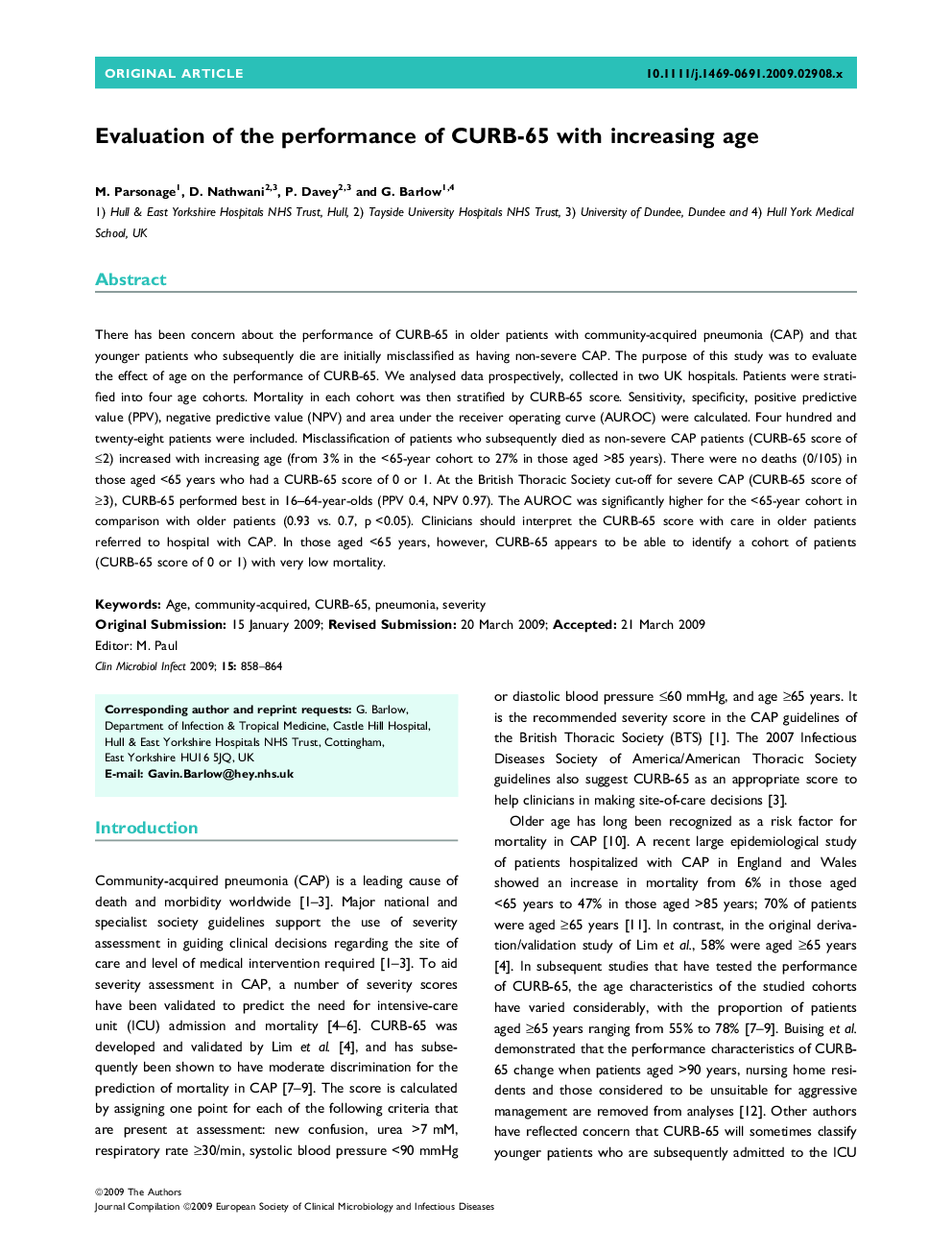| Article ID | Journal | Published Year | Pages | File Type |
|---|---|---|---|---|
| 3397648 | Clinical Microbiology and Infection | 2009 | 7 Pages |
There has been concern about the performance of CURB-65 in older patients with community-acquired pneumonia (CAP) and that younger patients who subsequently die are initially misclassified as having non-severe CAP. The purpose of this study was to evaluate the effect of age on the performance of CURB-65. We analysed data prospectively, collected in two UK hospitals. Patients were stratified into four age cohorts. Mortality in each cohort was then stratified by CURB-65 score. Sensitivity, specificity, positive predictive value (PPV), negative predictive value (NPV) and area under the receiver operating curve (AUROC) were calculated. Four hundred and twenty-eight patients were included. Misclassification of patients who subsequently died as non-severe CAP patients (CURB-65 score of ≤2) increased with increasing age (from 3% in the <65-year cohort to 27% in those aged >85 years). There were no deaths (0/105) in those aged <65 years who had a CURB-65 score of 0 or 1. At the British Thoracic Society cut-off for severe CAP (CURB-65 score of ≥3), CURB-65 performed best in 16–64-year-olds (PPV 0.4, NPV 0.97). The AUROC was significantly higher for the <65-year cohort in comparison with older patients (0.93 vs. 0.7, p <0.05). Clinicians should interpret the CURB-65 score with care in older patients referred to hospital with CAP. In those aged <65 years, however, CURB-65 appears to be able to identify a cohort of patients (CURB-65 score of 0 or 1) with very low mortality.
